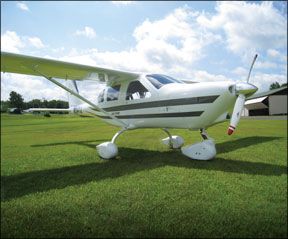Lets be clear right away as to our criteria here. We only looked at new aircraft, as classic LSAs were covered in our January 2008 issue. We also looked for aircraft that suited the fat part of the bell curve of pilot interest. Amphibious aircraft and
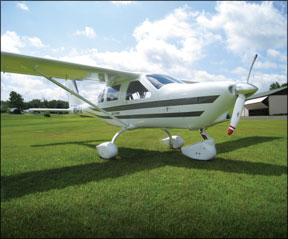
open-cockpit breezers were put aside for now.
We demanded predictable handling with positive stability. Points were awarded for comfort, crashworthiness, durability for training, ergonomics, baggage capacity, maintenance and our assessment of the company behind the aircraft.
While your perfect bird might not be on this list, wed wager that 80 percent of the folks searching for a new LSA would find one of these five aircraft the right LSA for them.
A definitive LSA: Tecnam Sierra
If we had to award the blue ribbon to only one machine, it would be the Tecnam Sierra. In fact, any of Tecnams LSAs could make the top five, and most comments here are more or less true of all the models. (If you like what you read about the
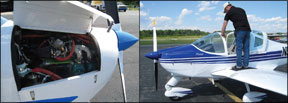

Sierra but want a high-wing, fly the Tecnam P92 Eaglet instead.) We chose the Sierra over the other Tecnams for a few reasons. But the number one reason was it was the most fun to fly.
The Sierra is as forgiving or as sporty as you want in the air. Its light in roll, which gives it a nimble feel, but is stable and flies hands-off when trimmed. Trim is electric and on the stick. We tested landing with cruise trim still set to simulate a failure of the system (there is no manual trim override) and had no issues. Flaps are effective and landing visibility is excellent.
Stalls were a non-issue. The Sierra might try to spin with an aggressive, uncoordinated power-on stall, but power-off stalls-even cross-controlled-were straight-ahead mushes or a slow break to the side. The Sierra is used for light
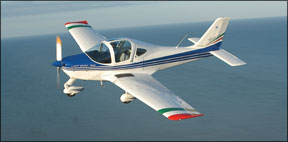

aerobatics in Europe (look on YouTube). Its not approved for that in the U.S. The Sierra might be too light on the controls for IFR training. Try the Eaglet for that.
The Sierras gear is beefy (for an LSA) and ground handling is excellent (toe brakes are optional). Visibility with the bubble canopy is unlimited up and forward. Rear visibility is poor.
Baggage is a weak point with only 44 pounds allowed in a smallish area behind the seats, however, a cargo net keeps tall or bulky items in place.
The Sierra has full roll-over protection-uncommon in a low-wing LSA-and a crash-cage design. One Sierra pilot did stall and spin from 100 feet AGL-and walked







3)]away. Four-way seatbelts are standard. One issue we see is that all Tecnams store fuel in the leading edge of the wing. We feel this can be a post-crash fire hazard more than other designs.
Flying around with the canopy open is one of the great benefits of the Sierra, but pilots must duck to open and close it. Tall pilots might have an issue with headroom. The Sierra seats are adjustable in flight, which is also uncommon with LSAs.
Interior and panel options range from bare-bones to leather and glass-panel. Tecnam Aircraft of Italy has been building aircraft since 1948, and there are over 2500 Tecnam LSAs flying worldwide.
The Load Hauler: Jabiru J230
The Jabiru J230 looks like a scaled-down Cessna Cardinal with wing struts. Even the doors swing open like the Cardinal for super-easy access to the (albeit low) cockpit. The J230 is based on Jabirus four-seat kit plane with only two seats installed. This means the baggage area is cavernous and can carry a whopping 260 pounds. With only 520 pounds of useful load, this is more useful for bulky items
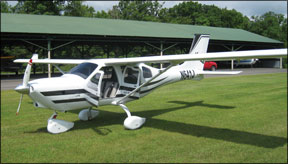

than heavy ones.
We were impressed with how easy it was to inspect systems and control linkages, as most are visible inside the cabin or on preflight. The low panel makes for acceptable forward visibility. The seats don’t adjust, and adjustable rudder pedals are an $800 option. Tall pilots will need them and all pilots may find their knees close to the panel. This may be an issue in a crash. Crashworthiness overall is a bit of an unknown with the Jabiru.
The center stick is unusual but easy to get used to. Throttle controls are on the far sides of the panel, so the pilot flies with his left hand on the throttle and his right on the stick. This is an issue when trimming, as the trim is under the stick and you must reach across your body to move it. Its a bungee system that works we’ll but lacks the solid feel of other LSAs. Braking is from a center lever above the trim,
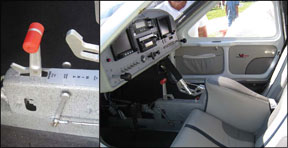

which also requires an awkward reach to hold the stick and brake simultaneously. An optional, U-shaped stick makes this operation possible one-handed, if still awkward.
In flight the Jabiru performs generally well. Slow flight and stall characteristics were good, with a small tendency to break and rotate. Recovery was immediate and easy. At high speed (110 knots), stick forces are heavy, but the aircraft is super stable. Roll rates are more like a Cessna 182 than an LSA. Ventilation is quite good. LED position lights are a nice touch. We did notice some finish work looked more like an experimental aircraft than a factory job.
Landing the J230 is trickier than other LSAs. It doesnt like to slow down and even with full flaps the over-the-nose visibility is poor, in our opinion. Luckily, it slips well. Transitioning pilots will need some practice and it might not be the best aircraft for students.
The J230 uses Jabirus 120-HP, six-cylinder engine instead of the ubiquitous Rotax 912. On our flight test it performed flawlessly and it has a generally good record in the field of experimentals. Fuel burns are about 4.5 gph for 110 knots. The engine is simpler than the Rotax in some ways, as its direct drive and uses many
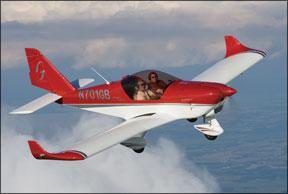

Photo: EAA / Jim Koepnick
automotive parts for cheaper maintenance. The oil filter is the same as a Toyota Camry. Jabiru claims an overhaul should be around $7000.
Polish ingenuity: Gobosh 700S
Walking away from the Gobosh 700S we kept thinking, “Somebody really thought this airplane through.” The Gobosh excels in clever details:the dipstick on the fuel cap for easy reading, a control to let air out of the bubble canopy to control ventilation in flight, a self-locking toe-bar, emergency canopy release pins, a cockpit control for the oil cooler (the Rotax 912 oil must reach 120 degrees before you can run up) … the list goes on. The Gobosh also has a POH worthy of a certified airplane.
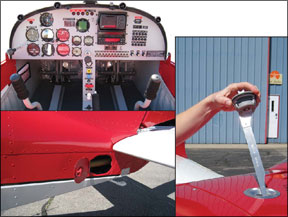

Inside the cockpit, systems are simple where appropriate-such as manual, split flaps-or sophisticated where helpful, such as a vernier control for the throttle. Entry into the cabin is relatively simple, and the canopy close and lock system is we’ll thought out. The cockpit is we’ll laid out, with the exception of controls in the center stack where labels are hard to read. Baggage size is limited as it must fit in one of two lockers behind the seat. There is ample space on the shelf behind the seat, but stuff there can pose a crash hazard.
The 700S seats don’t adjust and neither do the rudder pedals. You can change out the cushions for a different fit, but tall and short pilots might find the plane
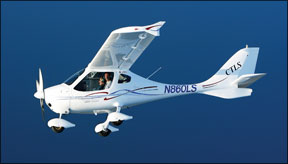

uncomfortable. Visibility over the nose isn’t terrific in taxi (but is fine in flight). Ground handling is good with differential braking via toe brakes. The 700S has a bit of left-turning tendency on takeoff roll, but its rudder is effective in seconds.
The 700S is stable enough in flight for comfortable cruising or IFR training, yet responsive enough to be fun. Roll forces are heavy at speed but lighten as you slow down. Pitch is a bit light overall, but not unacceptably so. Slow flight and stalls are non-events. Forward visibility on landing is acceptable at all flap settings,
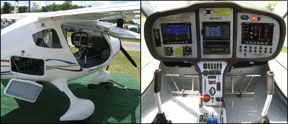

but not terrific, in our opinion.
Gobosh is a new company, rebranding aircraft from Europe. The 700S is Polish. The Gobosh 800 will be a Czech-designed, all-composite model. Talking with Gobosh V.P. Dave Graham, we were impressed with his honest representation of his company and the two models strengths and weaknesses. Gobosh may be a new face, but they have the right attitude for this business.
Refined Light Sport: Flight Design CT-LS
Flight Design has been a leader in LSA sales since the beginning with its German-built composite CT-SW aircraft. The CT-LS is a refinement of this design with better landing gear and flight characteristics as we’ll as other general improvements. The CT-LS fuselage looks bulbous from the outside, but the moment you climb in you realize its worth the odd look.
The CT-LS is the most comfortable LSA weve flown. Seats adjust forward and up







4)](or backward and down) to seven positions, but they must be set on the ground. Gullwing doors make entry and exit a snap. The CT-LS wins the cockpit ergonomics award with ample space for instrumentation, well-organized controls and switches, great visibility (except for the aft visibility) and even a small compartment in the floorboards for handy storage. The only ergonomic flaw we found was the pitch trim, which is a wheel thats a bit stiff and too recessed, in our view.
The CT-LS and CT-SW both have a good cockpit crash structure and comfortable, four-point seatbelts. The CT-LS comes with a standard glass panel and optional autopilot. Cockpit ventilation is excellent with the optional photo window. If you get a CT-LS, spring for this extra. We do wish theyd change the heat outlet, which can roast the pilots right foot or the copilots left.
Wed flown the CT-SW and found it OK, but difficult to keep coordinated and a bit of a floater on landing. The CT-LS fixes both these issues. Its stable and easy to control. Stalls are docile enough for any student. Our flight test showed the CT-LS quite heavy in roll. So heavy, in fact, that we wondered if something was wrong with the rigging in the airplane. Our demo pilot, Jonathan Carter, agreed that there might have been an issue. While heavy controls might make it less sporty, it would







0)]be a fine cross-country machine.
It takes a few landings to get the hang of the CT-LS, because the over-the-nose visibility with flaps extended is so good and a bit lopsided as you can see around the side of the instrument panel. After a few landings, the pilot adapts. Three hours of transition training is standard with any Flight Design purchase.
Flight Design USA has good support for the over 250 CT models flying in the U.S. They recently introduced a new, all-metal model.
Pack and go: Remos GX
We flew the previous Remos G3 and found it a great aircraft. But our opinion was that its Ceconite-covered wings made it a non-starter for an everymans LSA. Remos disagrees, but has acquiesced to demand and released the GX model with composite wings and several other upgrades.







1)]The cockpit layout and ergonomics are reminiscent of the Flight Design CT but not quite as good, as we see it. Ironically, the electric trim control is perfect-an easy flick of your thumb to the panel while your hand is on the center throttle. Fuses in the cockpit are a bit of a throwback (bring spares if you fly at night). The seat adjusts to three different positions and on the ground only. The gullwing doors have an excellent latching system (uncommon on LSAs) and can be removed for open-air flight. A glider-tow kit is also an option.
With the doors on and closed, cockpit ventilation isn’t as good as other LSAs weve flown. Visibility is generally good, but one big weakness is the tiny rear window. If you fly right-hand traffic you have to estimate when to turn base.
The Remos GX flies well, although not as we’ll harmonized as the earlier G3, being heavy in roll and light on the rudder. The trim system is excellent and the GX will fly hands off with little effort.







2)]Slow flight performance was excellent but stalls are the least forgiving of our top five. Our demo pilot was actually nervous when we tested power-on stalls, and, sure enough, we found the GX would break left on the power-on stall if at all uncoordinated. The Remos has more than adequate rudder authority, however, so recovery is quick and easy. The GX controls get light at low speed in landing but adequate for the job. Landing visibility is good.
Real Airplanes, Light
There is much more we could say about each of these aircraft and the LSA field is a moving target. Next years best five list will probably have some new faces. Even so, each one of these airplanes has the right stuff to be a long-term contender and should be on anyones short list.

